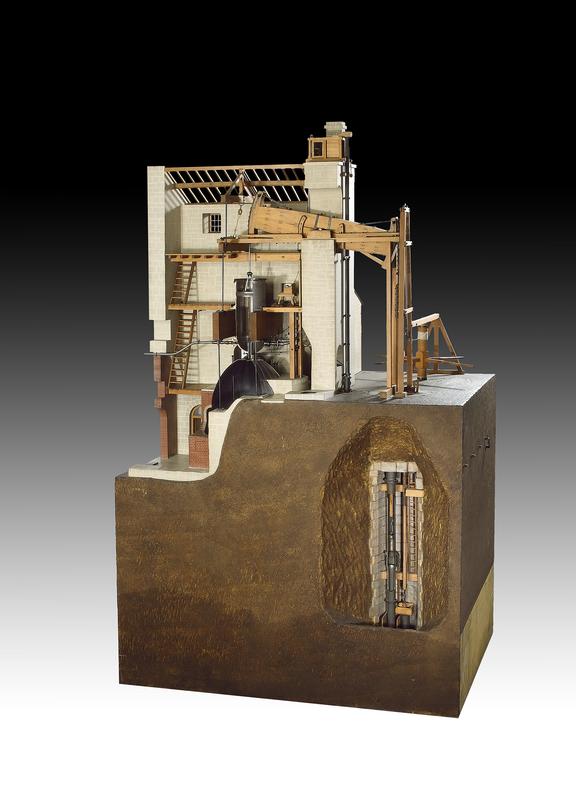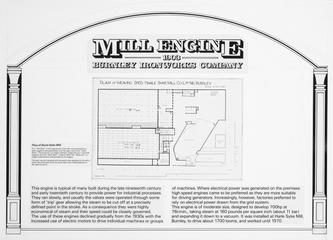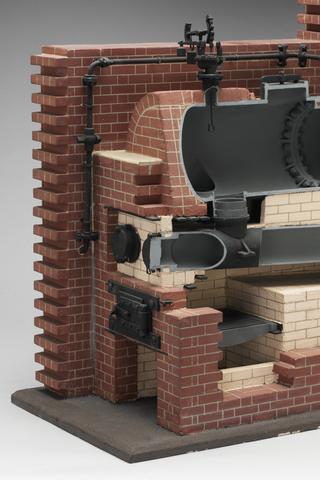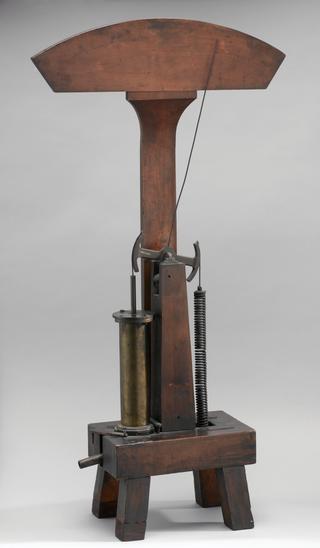
Atmospheric Engine by John Smeaton, 1772
- Made:
- 1772 (original); 1919 (model) in England
- designer:
- John Smeaton




Working model, sectioned, scale 1:12, John Smeaton's atmospheric engine at Long Benton Colliery, 1772
In 1767, the engineer John Smeaton was tasked with building an atmospheric engine for the New River Company in London. He tested it in 1769, and its shortcomings led Smeaton to embark on a long series of tests to improve the atmospheric engine's efficiency. He collated information on fifteen of the best-performing atmospheric engines, and with it ultimately built the full-size engine of which this is a model. When it was put to work at Long Benton Colliery in 1774, it was found to be 25% more efficient than any other engine built up to that time. Smeaton set a standard for an experimental and evidence-based approach to engineering, though his work was ultimately overshadowed by that of James Watt, based on the use of the seperate condenser, which reduced the steam engine's fuel consumption by up to 75%.
Details
- Category:
- Motive Power
- Object Number:
- 1919-335
- Measurements:
-
overall (estimate): 2100 x 1310 x 975 mm
- type:
- models, atmospheric engines and newcomen engines




